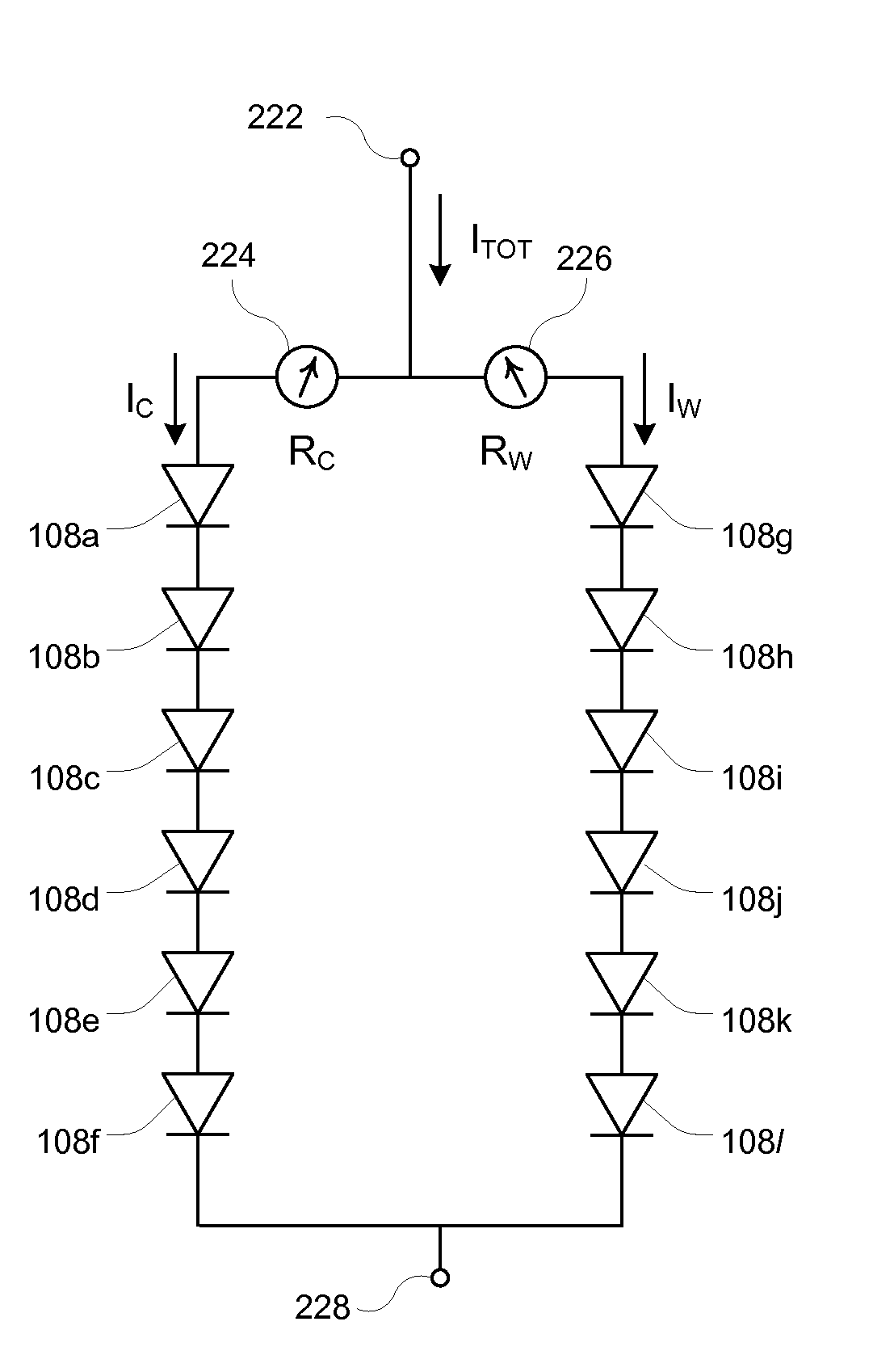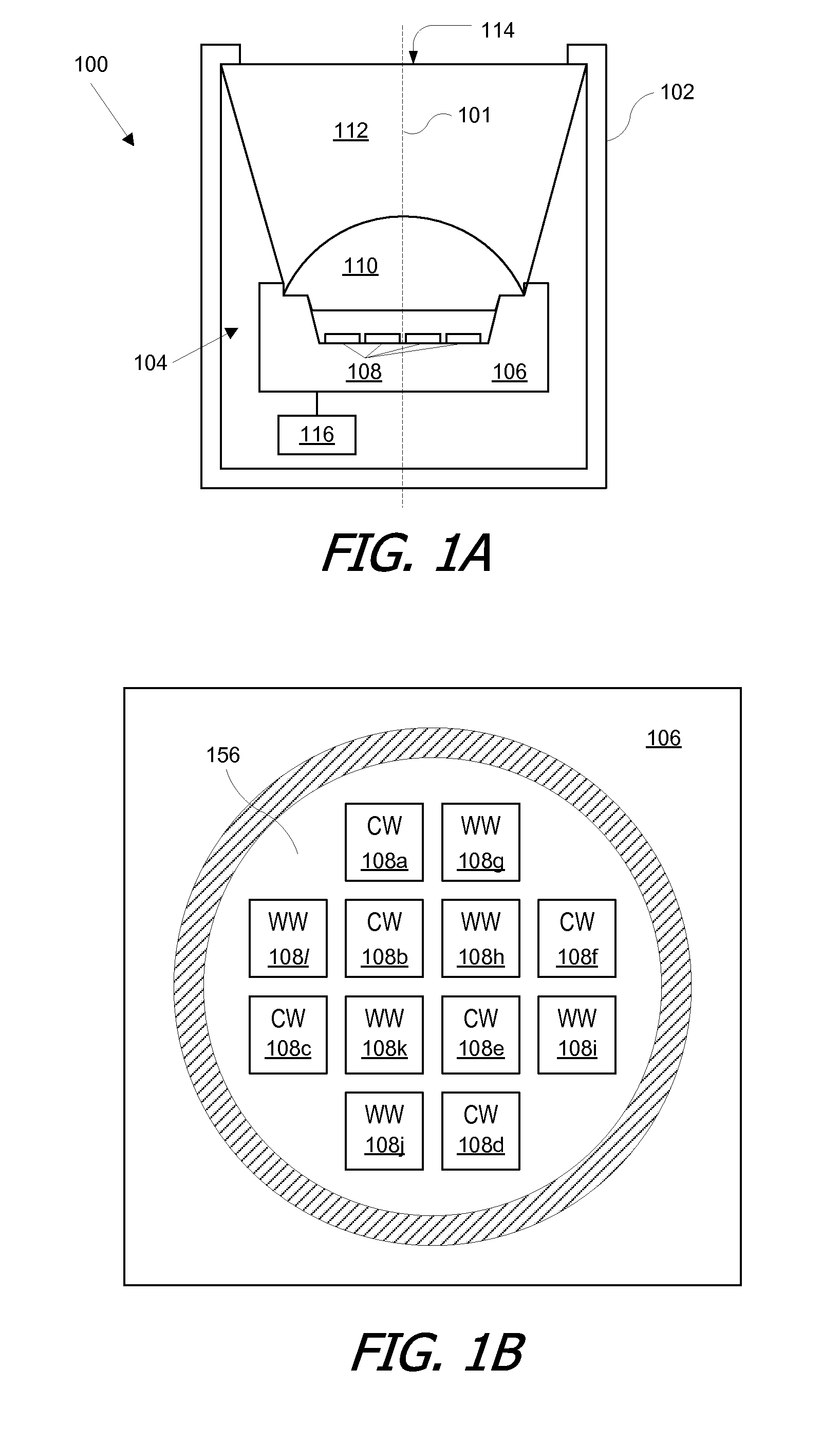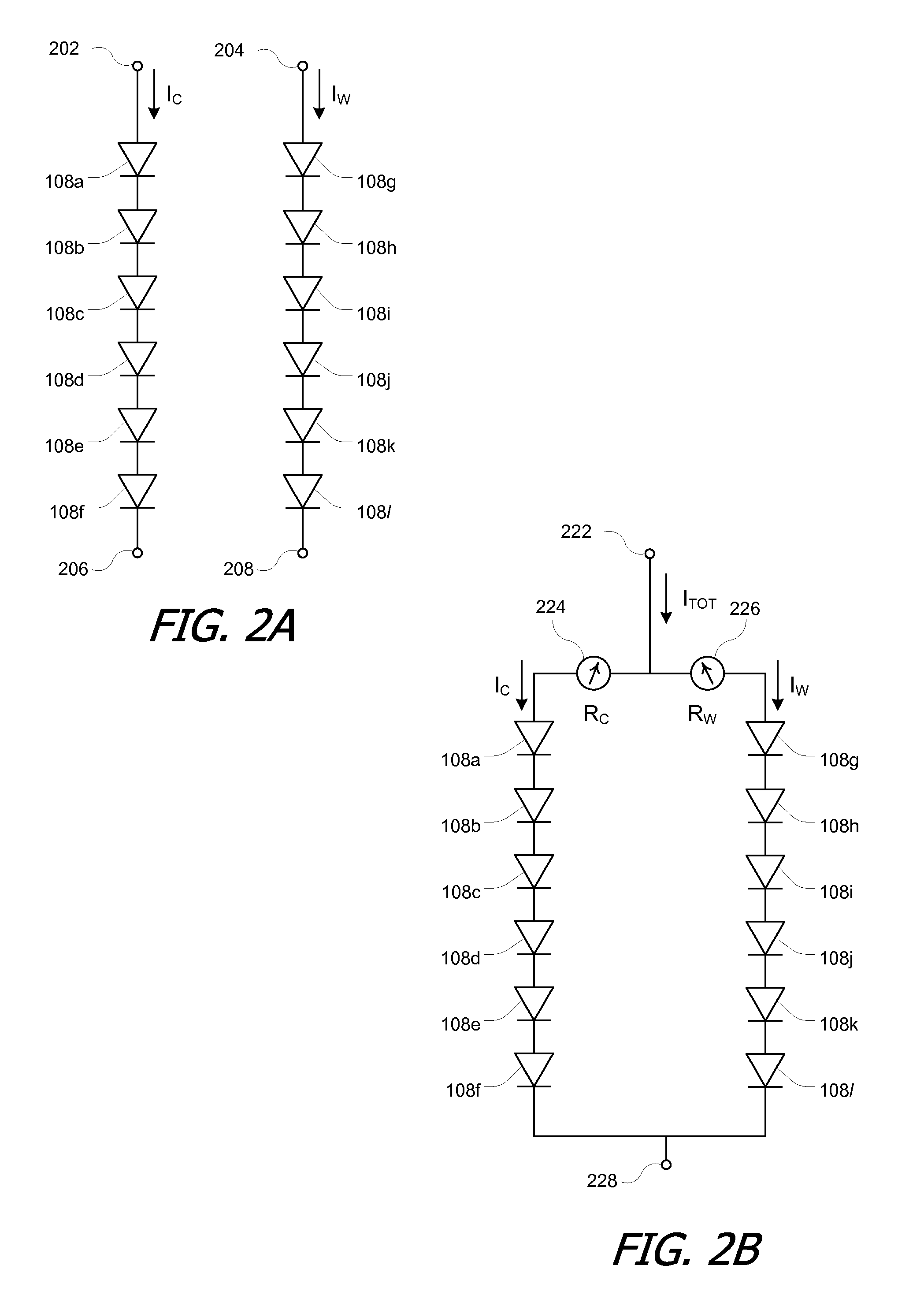Apparatus for tuning of emitter with multiple leds to a single color bin
a technology of led emitter and color bin, which is applied in the direction of lighting and heating apparatus, process and machine control, instruments, etc., can solve the problems of difficulty in mass-producing lamps that provide a consistent color temperature, difficulty in developing led-based lamps for general illumination, and difficulty in achieving consistent color temperature of leds
- Summary
- Abstract
- Description
- Claims
- Application Information
AI Technical Summary
Benefits of technology
Problems solved by technology
Method used
Image
Examples
Embodiment Construction
[0043]Embodiments of the present invention relate to techniques and apparatus for tuning the color of an LED-based lamp to a desired color temperature. Particular embodiments are adapted for use with lamps that include two or more independently addressable groups of LEDs that each produce light of a different color or color temperature. The lamps can also include a total-internal-reflection (TIR) color-mixing lens to produce light of a uniform color by mixing the light from the different groups of LEDs. The uniform color or color temperature output from the lamp is tuned by controllably dividing an input current among the groups of LEDs. For lamps using LEDs whose color is stable over time, the color tuning can be performed once, e.g., during manufacture and / or factory testing of the lamp, and the lamp can thereafter operate at a stable color temperature without requiring active feedback components.
[0044]Embodiments for tuning lamps with two independently addressable groups of LEDs ...
PUM
 Login to View More
Login to View More Abstract
Description
Claims
Application Information
 Login to View More
Login to View More - R&D
- Intellectual Property
- Life Sciences
- Materials
- Tech Scout
- Unparalleled Data Quality
- Higher Quality Content
- 60% Fewer Hallucinations
Browse by: Latest US Patents, China's latest patents, Technical Efficacy Thesaurus, Application Domain, Technology Topic, Popular Technical Reports.
© 2025 PatSnap. All rights reserved.Legal|Privacy policy|Modern Slavery Act Transparency Statement|Sitemap|About US| Contact US: help@patsnap.com



